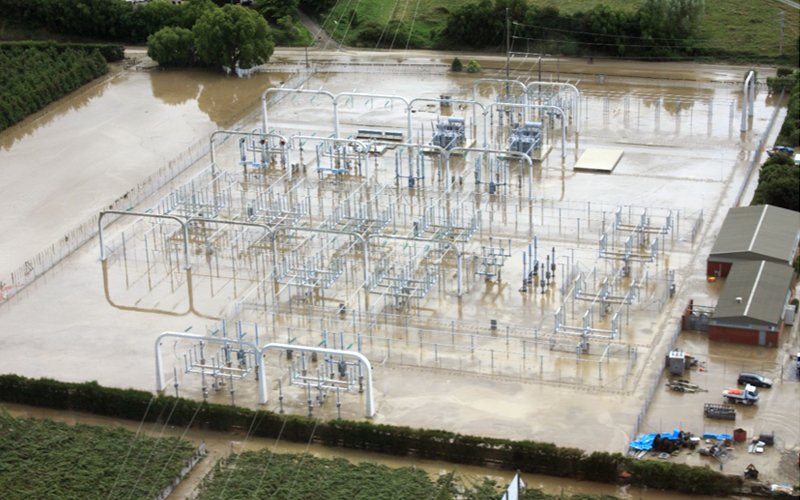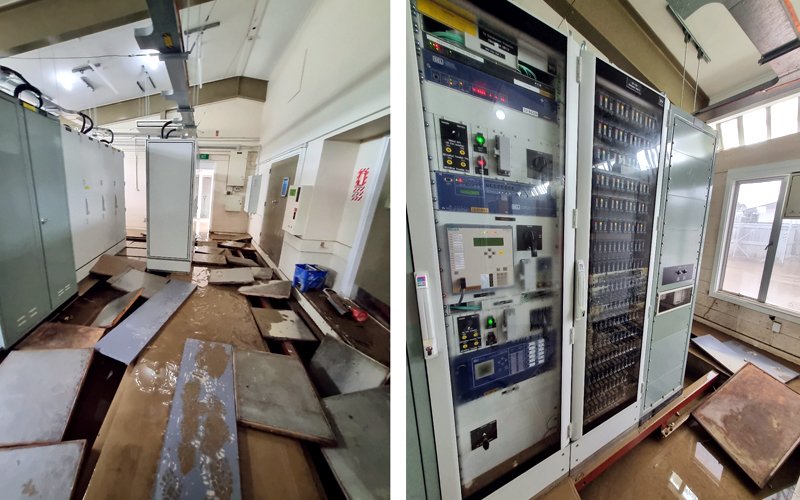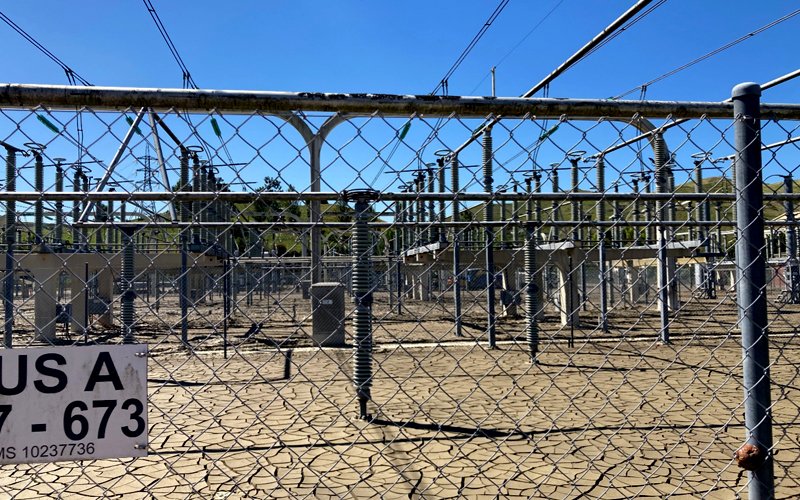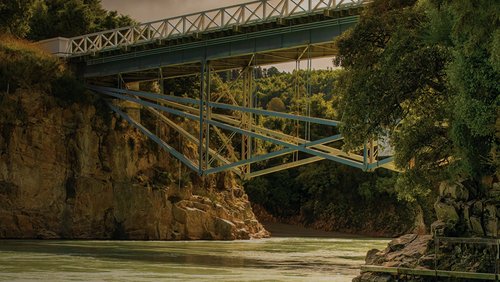8 Aug 2023
Tropical Cyclone Gabrielle was an historic event, causing widespread damage and the tragic loss of 11 lives. Bhavish Kumar, a Protection and Automation Operations Manager for Transpower, recounts how his team worked tirelessly to restore power after an important Hawke’s Bay substation was knocked offline by flooding.
For Bhavish, the morning Cyclone Gabrielle hit was a time of uncertainty. Infrastructure of every kind was impacted by the storm. This included the fibre internet connections Transpower partially relies on to monitor the status of its network.
“By 7:30am we got a notification that Redclyffe, which is one of the main substations for Hawke’s Bay, was blacked out, and no one could get out to it,” Bhavish said. “Normally in a situation like that we would use a helicopter to get eyes on the site and figure out what was going on, but of course at that point they were all being used to save lives, which was far more important.
“But it meant on that first day post-cyclone we had no way of knowing exactly what had gone wrong – we just knew we weren’t receiving any data, either online or from the relays at Redclyffe,” he said. Relays, which act like fuse switches, communicate with each other and can automatically shut down parts of the network where faults are detected.
That’s pretty much a worst-case scenario for my team. You can’t operate a substation without the brains.
“That was concerning, because the relays are housed in the control room, which is pretty much the brains of the whole substation,” Bhavish said.
It wasn’t until Wednesday that a team was able to get to Redclyffe substation. They found 1.5 metres of water had flowed through the substation, including over key circuit breakers, transformers and, most critically, through the control room.
“That’s when it dawned on everyone how big of a mission it would be,” Bhavish said. “That’s pretty much a worst-case scenario for my team. You can’t operate a substation without the brains.”

Redclyffe substation the day after the flooding. Photo: Bhavish Kumar
Bhavish was keenly aware that a large number of people had already been without power for 24 hours. “From that point on, both my team and our service providers were working some big hours, day after day, to get a fix in place,” he said.
It was obvious from the extent of the damage that there was no way to get the substation operating in a short period. A stopgap solution was needed to quickly restore power.
Bhavish describes substations as “offramps” for the high-voltage electricity carried on the “highway” that is our national power grid. They control and transform electricity to a lower voltage for use in residential homes. To restore power quickly, he and his team decided Redclyffe substation had to be bypassed so that the downstream Whakatu substation could be used instead.

Redclyffe substation control room, with flood damage to the equipment inside. Photo: Bhavish Kumar
“We knew we couldn’t control the power at Redclyffe, so we decided to just treat it like a section of transmission line to get power out to Whakatu,” Bhavish said. “This meant that instead of needing to repair the whole substation, we just had to isolate most of it from the network and reconfigure our relays at other locations to account for that.
“To make it work, we needed power to flow through a particular conduit – called a ‘bus’ – at Redclyffe. We got in there with hydro-vacuum trucks, water-blasters, brooms and shovels – all sorts – to clear out all the water and silt and completely clean the bus.”
The plan worked, with power restored within four days — although Bhavish is quick to acknowledge that four days is still a long time for people who are affected. Still, it was an impressive turnaround considering the amount of damage sustained by the substation and the logistical challenges involved.

Redclyffe substation’s outdoor equipment after being cleaned and returned to service. Photo: Bhavish Kumar
Bhavish and his team are now focused on restoring as much functionality as possible to Redclyffe substation so that the bypass can be removed. They’re also taking the opportunity to improve resiliency. “We’ve raised the control room by about two metres, along with some other important equipment, so if we have another flood event, it’s much less likely to be affected in the same way,” said Bhavish.
A long-term solution is also in the works. “Assets like these cost a lot, and we want to make sure we’re spending New Zealand’s money on the right things,” said Bhavish. “But whatever solution we go with, our focus will be on resiliency.”




